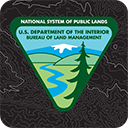Big Game Management is Big News in Utah
Stephanie Graham, West Desert District Acting Public Affairs Specialist, Bureau of Land Management, Utah
Do you ever wonder — where do the wildlife go? Biologists throughout Utah are actively working to answer that question. The Bureau of Land Management (BLM) has partnered with Utah Division of Wildlife Resources (DWR) to capture, collar, and track big game throughout the state of Utah for the past few years.
The effort is part of the Utah Wildlife Migration Initiative developed in 2017 to identify and protect connective corridors that allow fish and wildlife to migrate. The BLM and DWR work alongside sportsmen’s groups and other agencies, such as U.S. Fish and Wildlife Service, U.S. Geological Survey, and Utah Department of Transportation on this effort. The partnership between the BLM, DWR, and other groups allows for the efficient transfer of funds, labor, and materials to gather data on big game and other wildlife.
This effort to identify corridors was amplified by Secretarial Order 3362 “Improving Habitat Quality in Western Big-Game Winter Range and Migration Corridors,” which was signed on February 9, 2018. The Secretarial Order led to the development of additional partnerships between multiple state and federal agencies that support research and habitat improvement projects.
In the state of Utah, five priority areas were identified, with three of them located on BLM-managed lands. The goal of the program was to identify migration and crucial winter range within a two-year time period. Following this period, agencies within the Department of the Interior plan to continue working with DWR to complete habitat improvement projects in these important big game use areas. In 2020, DWR captured 621 deer, 25 elk calves, 20 mountain goats, 19 bighorn sheep, and 32 pronghorn. That’s a lot of wildlife! Thousands of acres of habitat improvement have enhanced wildlife migration.
So, what happens during a big game collaring event? Animals are located by a helicopter crews scouting for them. Once captured, GPS transmitters are placed on the animal so real-time data can be collected. Location data is transmitted between every 20 minutes and two hours. During the capture process, a certified veterinarian is present and vital rates, such as heartrate, temperature, and respiration, are continuously checked to ensure proper animal welfare. Other body condition measurements, such as body fat, and blood samples are also collected. The blood samples are tested for chronic wasting disease and potassium. Following the collaring of wildlife and collection of animal health metrics, the animals are gently placed on the ground and run off to find their next adventure.
Movement and migration data are used to inform wildlife management decisions across the Utah. According to Sydney Lamb, wildlife biologist at DWR, “it’s important to learn what habitat the deer are using, how they are using it, and how we can manage resources together to benefit wildlife.”
For instance, fawn and doe survival is very informative to biologists who are trying to understand limiting factors that impact animal survival. That information along with doe/fawn ratios is used to determine the number of hunting tags released to the public. In addition, management actions can be implemented post disease testing if there is concern that diseases will spread. Location data also informs biologists about habitat used by fawning does, a critical component to mule deer survival.
Location, location, location. Knowing the location of wildlife helps managers to understand their needs and preferences. Like humans, wildlife are particular about their needs and desires (including the specific areas where they reside and move). Wildlife biologists, like Emily Jencso at the BLM Salt Lake Field Office, are interested in learning about the impact of fences on wildlife movement patterns.
According to Emily Jencso, “the Salt Lake Field Office pioneered a fencing application that can be used to map fences across the region and identify fences that impede movement to wildlife, particularly big game.” That application was transferred to DWR. DWR is currently working on expanding its application state-wide. Fences that are non-functional or impede wildlife movement are repaired or replaced with lay-down fences. Lay-down fences are fences that remain erect and intact during part of the year while livestock are present and are laid down on the ground during part of the year when livestock are not present to allow for wildlife movement. DWR is also working with State and federal agencies to identify highway crossings and develop mitigation techniques to facilitate movement across corridors.
Big game are a big deal. The Utah Wildlife Migration Initiative and partnerships between state and federal agencies are a great conservation success story. The strong relationship benefits wildlife, rangelands, and the public. As Daniel Olson, Utah Wildlife Migration Initiative Coordinator says, “I can’t imagine working with a better partner,” and folks at the BLM wholeheartedly say the feeling is mutual.
